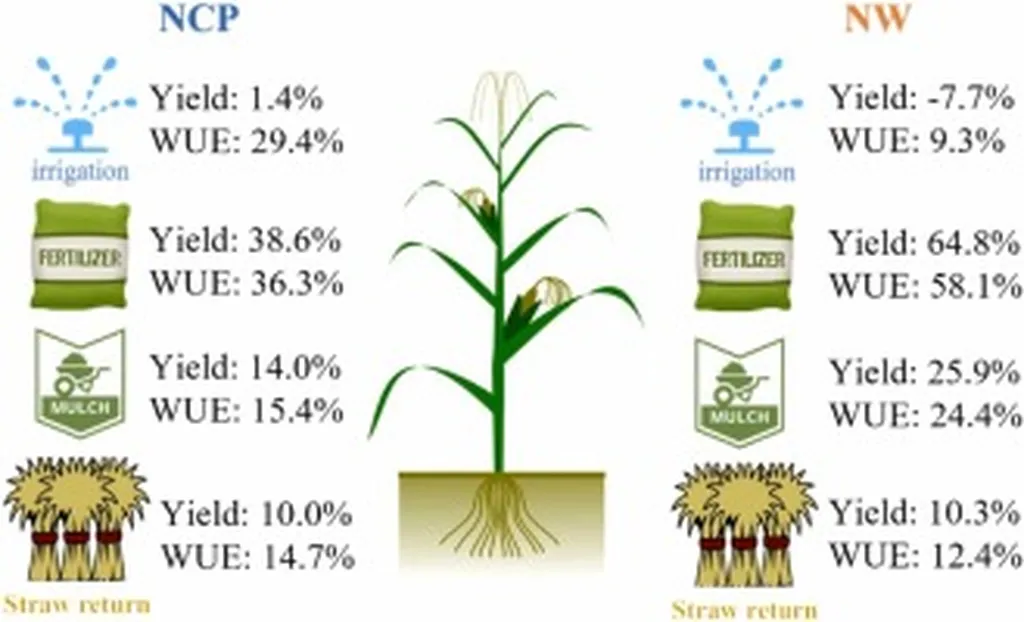In the heart of Northwest China, where water scarcity poses a constant challenge to agriculture, a groundbreaking study has emerged, offering a promising solution to enhance maize productivity and water efficiency. Published in the journal *Agricultural Water Management*, the research led by Xiaoling Wang from the College of Agronomy at Northwest A&F University, sheds light on the synergistic effects of subsoiling tillage (ST) and micro-ridge-furrow sowing (RS) on maize cultivation.
The study, conducted over two years (2022–2023), compared conventional tillage (CT) with subsoiling tillage and flat sowing with micro-ridge-furrow sowing. The findings revealed that the combination of ST and RS significantly improved soil water storage and promoted root development in both shallow and middle soil layers. This enhancement led to increased leaf area index, chlorophyll content, and dry matter accumulation in maize plants.
“Our results demonstrate that the integrated application of subsoiling tillage and micro-ridge-furrow sowing can effectively conserve soil water and increase grain yield,” said Xiaoling Wang, the lead author of the study. The research showed that ST+RS increased the two-year average grain yield by 7–24%, with notable improvements in the number of grains per ear and the 100-grain weight.
The economic implications of this research are substantial. By optimizing water productivity and nitrogen uptake efficiency, farmers in drought-prone regions can achieve higher yields with the same or even reduced water inputs. This not only enhances the resilience of maize systems but also offers a pathway to more sustainable and profitable agriculture.
“The adoption of ST+RS can significantly raise economic benefits for farmers,” Wang added. “This practice not only conserves water but also improves the overall efficiency of resource utilization, making it a viable strategy for enhancing productivity in semi-humid, drought-prone regions.”
The study’s findings have far-reaching implications for the agriculture sector. As water scarcity becomes an increasingly pressing issue, the need for innovative water management strategies grows. The integration of subsoiling tillage and micro-ridge-furrow sowing presents a practical and effective solution that can be adopted by farmers to mitigate the impacts of drought and improve crop yields.
This research, published in *Agricultural Water Management* and led by Xiaoling Wang from the College of Agronomy at Northwest A&F University, underscores the importance of interdisciplinary approaches in addressing agricultural challenges. By combining agronomic practices with water management strategies, the study offers a blueprint for enhancing productivity and sustainability in maize cultivation.
As the agriculture sector continues to evolve, the insights gained from this research will undoubtedly shape future developments in the field. The adoption of ST+RS practices could revolutionize maize farming in drought-prone regions, paving the way for a more resilient and economically viable agricultural landscape.

